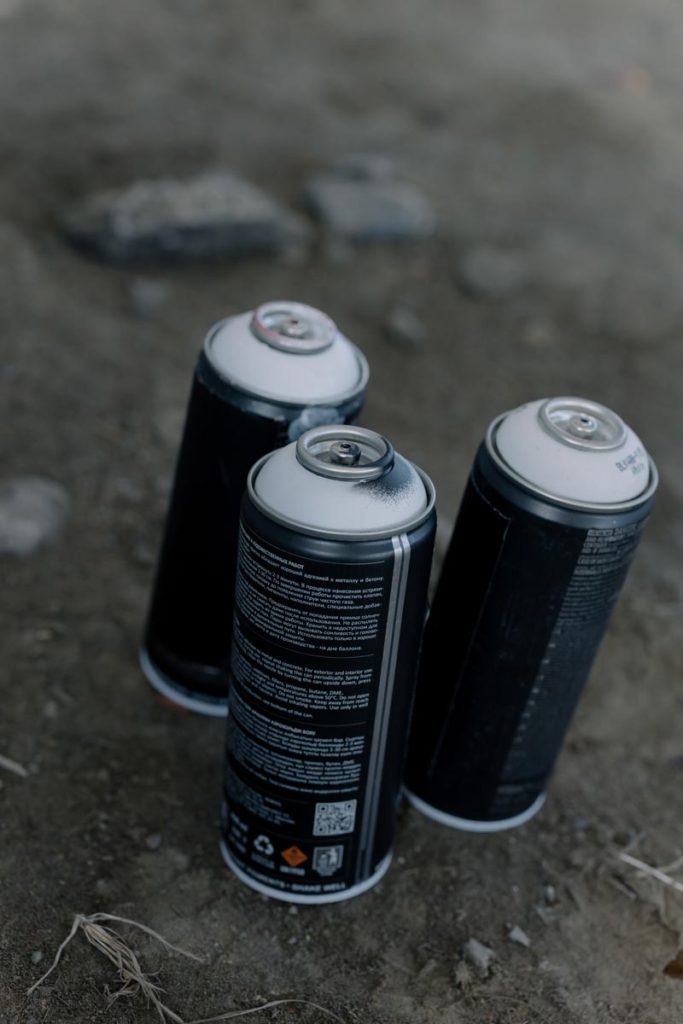When we think of kids experimenting with drugs recreationally, we think of narcotics and other drugs. However, when illegal drugs or prescription drugs are not accessible, teenagers often try to experiment with other household products that yield the same sort of high. For most parents, preventing teenagers from experimenting can be difficult because you do not know what sort of household items can be used to get high. Like fashion and computers, kids always seem to be one step ahead of parents. This blog will discuss some common household items teens use to get high when illicit and/or prescription drugs are not accessible in hopes of leveling the playing field.
Household Products That Can Get You High
Some of the most common household items that seem harmless are actually incredibly harmful. Below are 7 household items that teenagers use to get high.
Whipped cream cans
Teens can achieve a high simply by using a whipped cream can. Teenagers inhale compressed gas from the can which creates a short-term high. That’s right. The harmless can of whipped cream in your fridge can present a high to your child. Additionally, teens also may buy what are called “Whip-its” which are used to fill whipped cream canisters with nitrous oxide – the inhalant that achieves the high. Inhaling whipped cream cans and/or “Whip-its” can be deadly as it can result in the brain’s oxygen supply getting blocked and can cause harm to the heart. Using this drug can not only cause short-term damage, but long-term psychological damage as well.
Cough syrup
Cough syrup is an item that is found in almost every house and it is very commonly used to get high. Medications, such as Nyquil or Robitussin, are consumed excessively in order to achieve a high. The ingredient, Dextromethorphan (DXM), is a cough suppressant present in these medications and can cause hallucinations. When teens use cough syrup to get high, they have somewhat of an out-of-body experience which can produce adverse side effects such as panic attacks, seizures, paranoia, and high blood pressure. Continued abuse of cough syrup can result in psychosis.
Glue and adhesives
Inhaling glue, adhesives and paint can get teenagers high. Studies have proven that the inhalation of adhesives and paint can create a sensation similar to acute alcoholic intoxication. The chemical, Toluene, is what causes the high and activates the brain’s dopamine reward system. This ultimately creates a feeling of mild euphoria in the user. Large doses of glue/adhesive can result in hallucinations and disorientation. Moreover, inhaling these fumes can cause injury to the liver, brain, heart, kidneys, and bone marrow.
Hand sanitizer
Certain hand sanitizers, along with other antiseptics, have high concentrations of alcohol – higher than the percentage of alcohol in hard liquor, such as vodka. Some teens who may want to experiment can choose to drink these products to produce the same effect as alcohol. The CDC warns that consumed in high doses, hand sanitizer and other antiseptics can cause seizures, blindness, and death.
Dusters
Aerosol products used to clean dust from electronic devices can be used by teenagers to get high. “Dusting” can achieve a short-lived high and can cause hallucinations, delusions, and dizziness. If used in high enough doses, getting high off dusters can result in paralysis, suffocation, irregular heart rate, and more.
Nutmeg
This one may seem odd, but teens can get high off the easily accessible spice, nutmeg. Although a small amount of nutmeg is safe in baked goods, consuming too much nutmeg can result in hallucinations and psychosis. Nutmeg contains myristicin which when taken in high amounts, can induce drowsiness, dizziness, and gastrointestinal pain. In serious cases, toxic doses can cause organ damage and, when consumed with other drugs, can result in death.
Air fresheners, paint cans, and hair sprays

Aerosol sprays, such as air fresheners, hair sprays, and paint cans, can result in a high when inhaled. The practice of getting high through inhaling aerosol sprays is called “huffing” and it is very dangerous. The chemicals in the aerosol spray result in a mind-altering effect and can cause extreme damage to the brain. Moreover, “huffing” can cause sudden heart attacks and death.
Parents, if you believe your teenager is using household items to get high, it is crucial that you intervene. What some may feel are harmful habits or odd behaviors, just may be signs of household chemical abuse. Look changes in behavior such as a lack of interest in hobbies, poor grades, mood swings, and isolation from friends and family. If your teen is exhibiting these signs, they may be experiencing addiction. Try to approach your teen about what they are going through and offer your support in helping them with any help they may need. Consider sending them to inpatient treatment or enrolling them in an outpatient program to help them get sober.

